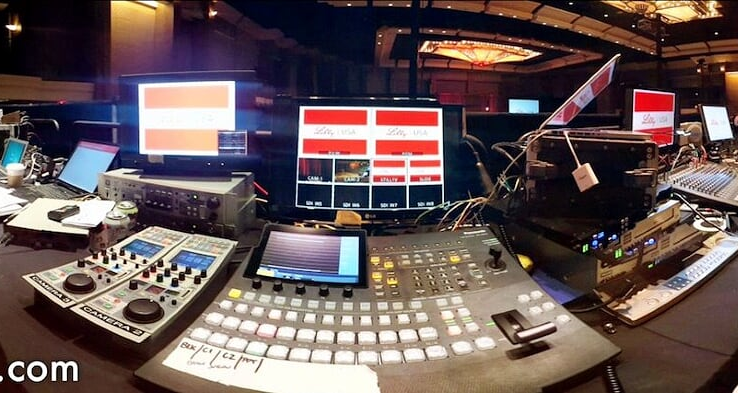Best Practices for Live Audio Mixing
By Adam Noyes
Great audio is probably the most difficult, but also most important part of your live stream. Bad audio will drive away your audience and distract from your content.
Anthony Burokas made this presentation at Streaming Media West 2014 covering all the various ways an “Audio Mixing Ninja” gets the best audio possible.
When it comes to live audio for streaming, there are a few additional wrinkles to consider that don’t come into play with audio recording when you aren’t streaming live.
Check out some highlights from this article from streamingmedia.com to learn more.
Fading, Limiting, and Compression
Let’s say my audio is masterful. No hiss. Nice, strong, clean audio. That means I’ve mastered the input trim on the microphone I’m using—especially those on wireless transmitters—and set it so it’s not so loud that the audio clips, and not too quiet that it forces me to increase gain, producing additional hiss.
The same goes for the audio mixer (Figure 2, below). With upward of four places I can adjust a single microphone’s audio, it’s easy to get lost. If my mixer has the ability to solo a channel, I’ll use that and have my subjects speak at “program level” while I adjust the input trim. This is key. They need to act like it’s the actual event and speak, sing, play, shout, at that same level.

Figure 2. Four of the main ways to adjust audio levels on a mixer
If I’m doing sports, having the engineer set a level while saying, “Hello, hello, 1, 2, 3, 4” at a conversational tone is nothing like the level at which the announcer will be shouting during a fantastic play. I need to be aware that live events will have much more dramatic audio than, say, a low-key corporate webcast, and adjust my levels accordingly.
Then I have the channel fader to bring up quieter parts of the discussion and bring down the loud parts. Perhaps there are submix groupings (all the stage mics, versus all the floor mics), and then there are the master faders. But what helps even out all these levels after the mixer are the limiters and compressors.
While the two terms are often used interchangeably, the two are not the same thing. A limiter, like a limit, means “No more than this.” It works to stop the audio from getting any louder than a given threshold. Usually, I can set where that threshold is, and that’s pretty much it. While this achieves the purpose of not allowing the analog audio to clip before being digitized, it can sound strange when audio has normal dynamics one moment and suddenly doesn’t the next.
A compressor, however, can vary its limiting effects on a curve depending on how loud something is (Figure 3, below). For instance, something quieter can have less compression. And, as it gets louder, the compression level can be set to increase, until it has the most compression at the loudest point. There are even combination limiter/compressors.

Figure 3. Some of the many ways a limiter/compressor can be set
What these limiters and compressors do is keep the loudest part of our audio from hitting the digital zero—where it clips and creates a “square wave,” as opposed to a smooth sine wave. This digital clipping, in most cases, sounds awful for our uses. Although musicians can use clipping differently to create specific audio effects for instruments or voices, that’s not what we’re after here.
Clipping is to be avoided as much as possible. However, I’ve heard clipping audio even when the faders on the mixer were not up that high and the output of the mixer was going into a compressor. The operator was confused because the output level was being properly handled—it was low, not in the red—yet it still sounded bad.
But the operator forgot that audio clipping can happen at the input of the mixer (input trim) or even at the input of the wireless transmitter, if there is one. No matter how I adjust it later, if it clips at an earlier stage in the audio chain, no amount of lowering the audio level at later stages will fix the clipped audio; it just makes it quieter.
If I’m looking at the mixer, or the compressor, and nothing is clipping, the audio can still be distorted if the person speaking is shouting to an audience, cheering a goal, or simply beyond the audio input levels at any stage of the process.

